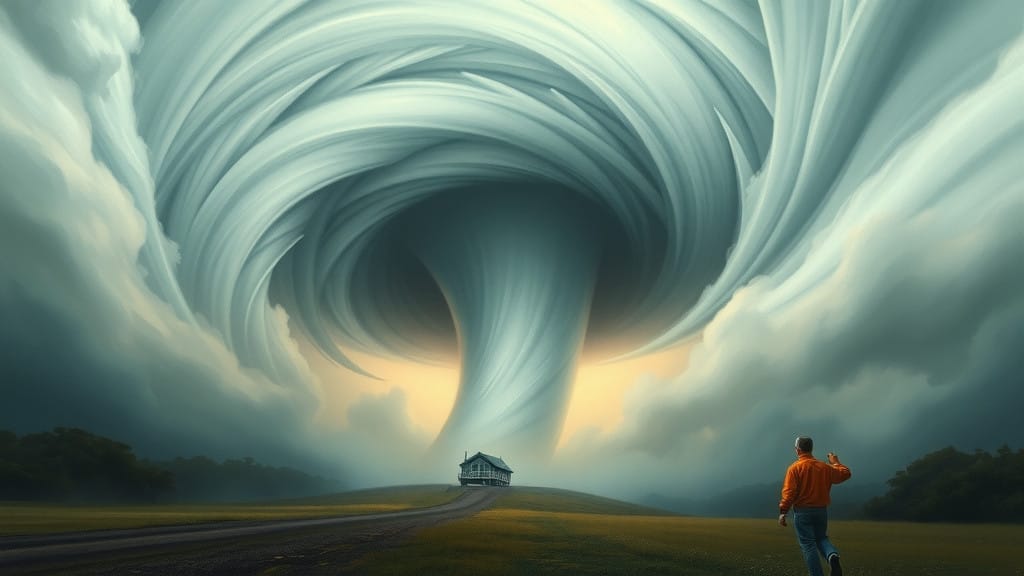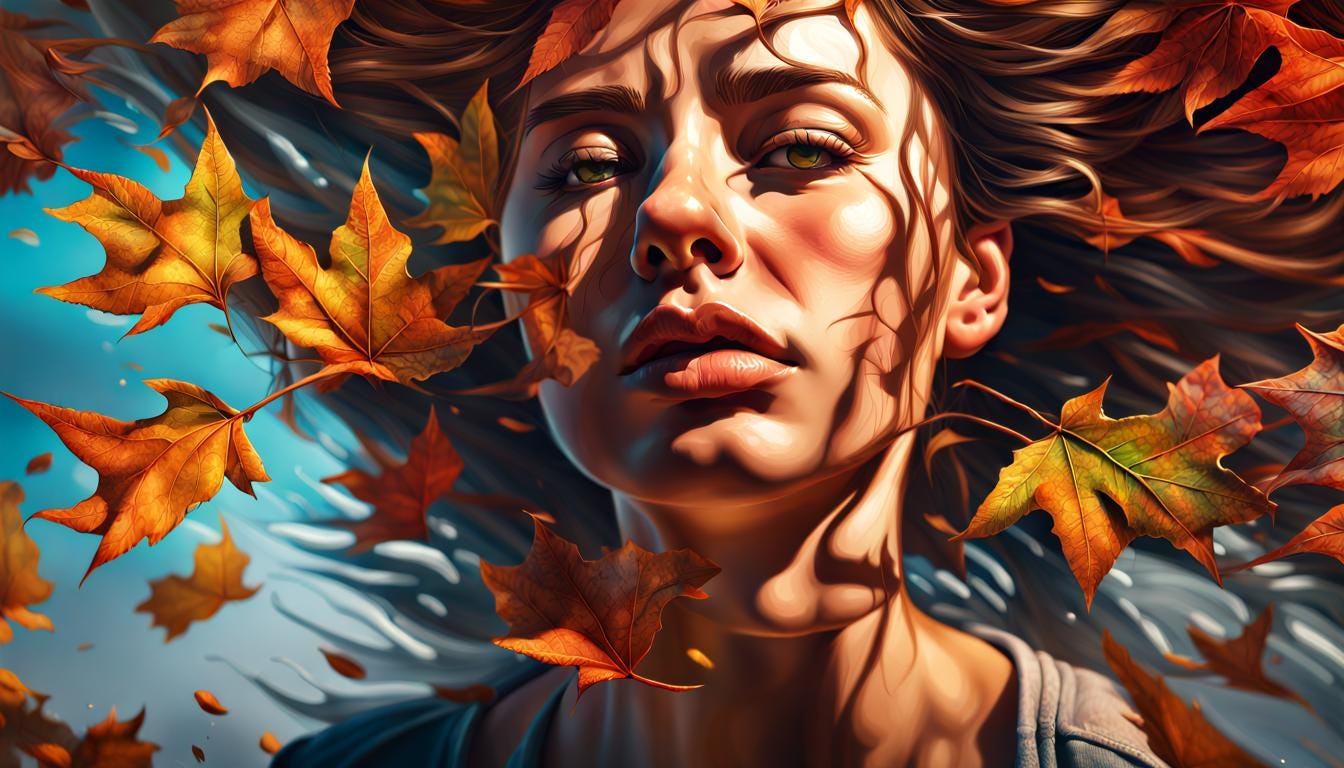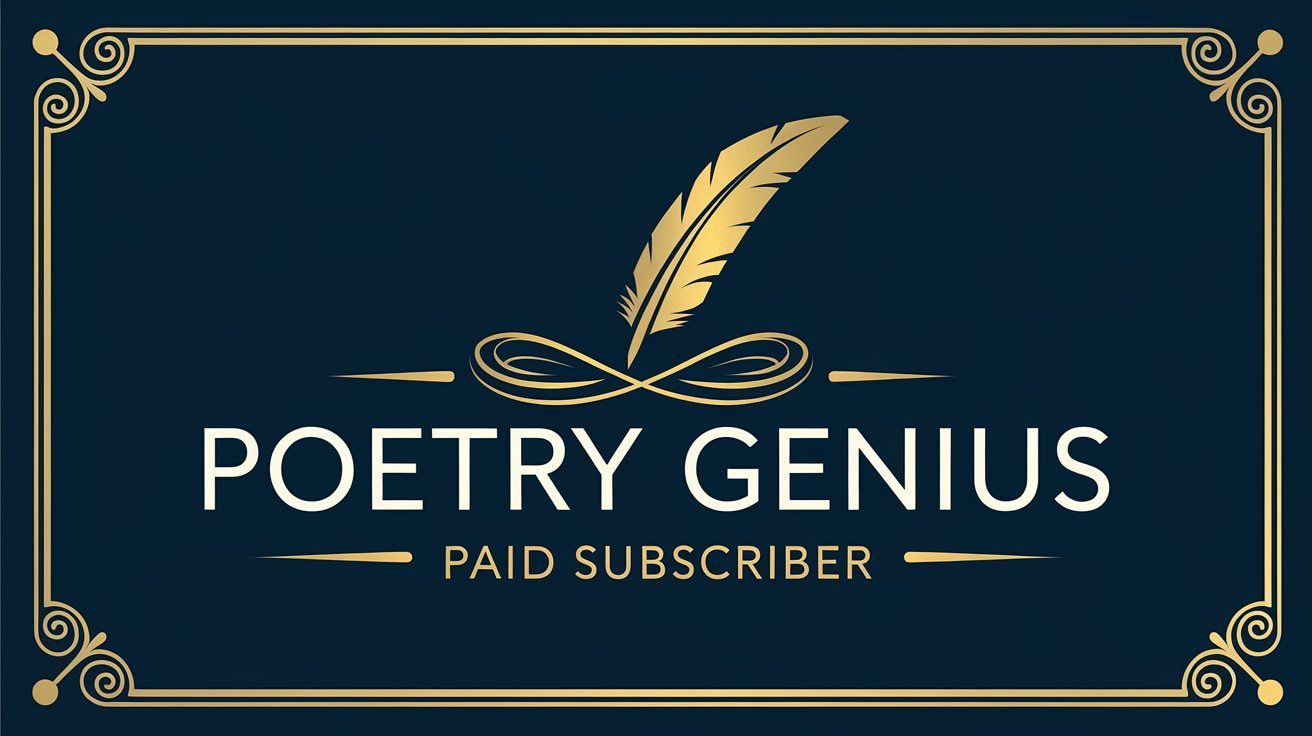Hi again subscribers
Here we are again with the 4th chapter of our poetry series, Elements. Chapter 4 is entitled Winds, and has 3 poems, each based on the style of various contemporary poets:
1. Dust Devil – in the style of Alison Luterman
2. Whirlwind - in the style of Tyler Knott Gregson
3. Wind - in the style of Ocean Vuong
Dust Devil
In the parking lot of the supermarket,
between minivans and shopping carts,
a miniature tornado whirls to life.
Plastic bags and crumpled receipts
dance in its embrace, rising
like dirty butterflies into the air.
For a moment, I am mesmerized
by this small chaos, this fleeting rebellion
against the orderly rows of produce inside.
I think of all the tiny revolutions
we ignore each day: the dandelion
pushing through concrete,
the graffiti on the overpass,
the laugh lines deepening
around my mother's eyes.
How many dust devils have I missed,
too busy with my list of should-haves
and must-dos?
Today, I let my errands wait.
I stand and watch until the wind dies down,
until the last scrap of paper
settles back to earth,
carrying with it a reminder
of how quickly beauty can arise,
swirl around us,
and disappear.
This poem, inspired by Alison Luterman's style, uses accessible language and everyday imagery to explore deeper themes. It focuses on a small, ordinary moment that becomes extraordinary, which is characteristic of Luterman's work. The dust devil serves as a metaphor for fleeting moments of beauty and rebellion in everyday life.
Whirlwind
you swept in like a storm
unexpected
unannounced
a cyclone of laughter
and wild eyes
spinning me off my axis
in your wake, everything
shifts
tilts
transforms
your fingers, electric
leave trails of sparks
across
my
skin
we are a maelstrom
of limbs and lips
defying gravity
in this chaos I find
a
new
equilibrium
spinning faster and faster
until the world blurs
and there is only
you
and
me
in the eye of
our
perfect
storm
This poem draws inspiration from Tyler Knott Gregson's often romantic themes and his use of unconventional formatting. It explores the idea of a whirlwind romance using spatial arrangement of words to create a sense of movement and energy.
Wind
Invisible hands sculpt the landscape,
fingers of air carving canyons in our certainties.
Trees bend and bow, leaves surrender
to the relentless caress of the breeze.
Whispers become howls, secrets torn from lips
and scattered like seeds across barren fields,
promises and lies alike carried on the wind.
We lean into the gale, our bodies bent
by the weight of unseen forces,
struggling to stand upright in a tilting world.
The wind whispers ancient stories,
tales of distant lands and forgotten peoples,
its voice a twist of time and space.
Dust devils dance on the horizon,
spinning tales of drought and desperation.
The wind carries the scent of change,
a premonition of storms yet to come.
We brace ourselves against the onslaught,
our clothes flapping like surrender flags,
yet we refuse to yield to the tempest.
In the eye of the storm, a moment of calm,
a breath held between gusts.
We find ourselves transformed,
weathered and worn, yet resilient,
shaped by the very forces that sought to break us.
The wind, both destroyer and creator,
leaves us forever altered in its wake.
The poem shares several hallmarks of Vuong's poetic style:
A deep engagement with natural imagery as a metaphor for human experience
A lyrical, almost breathless quality that blends concrete imagery with abstract emotional landscapes
A sense of transformation through elemental forces
Philosophical undertones that explore resilience, change, and the human relationship with nature
Next week, Chapter 5 is titled “Earth”
Till then, take care
Tom









